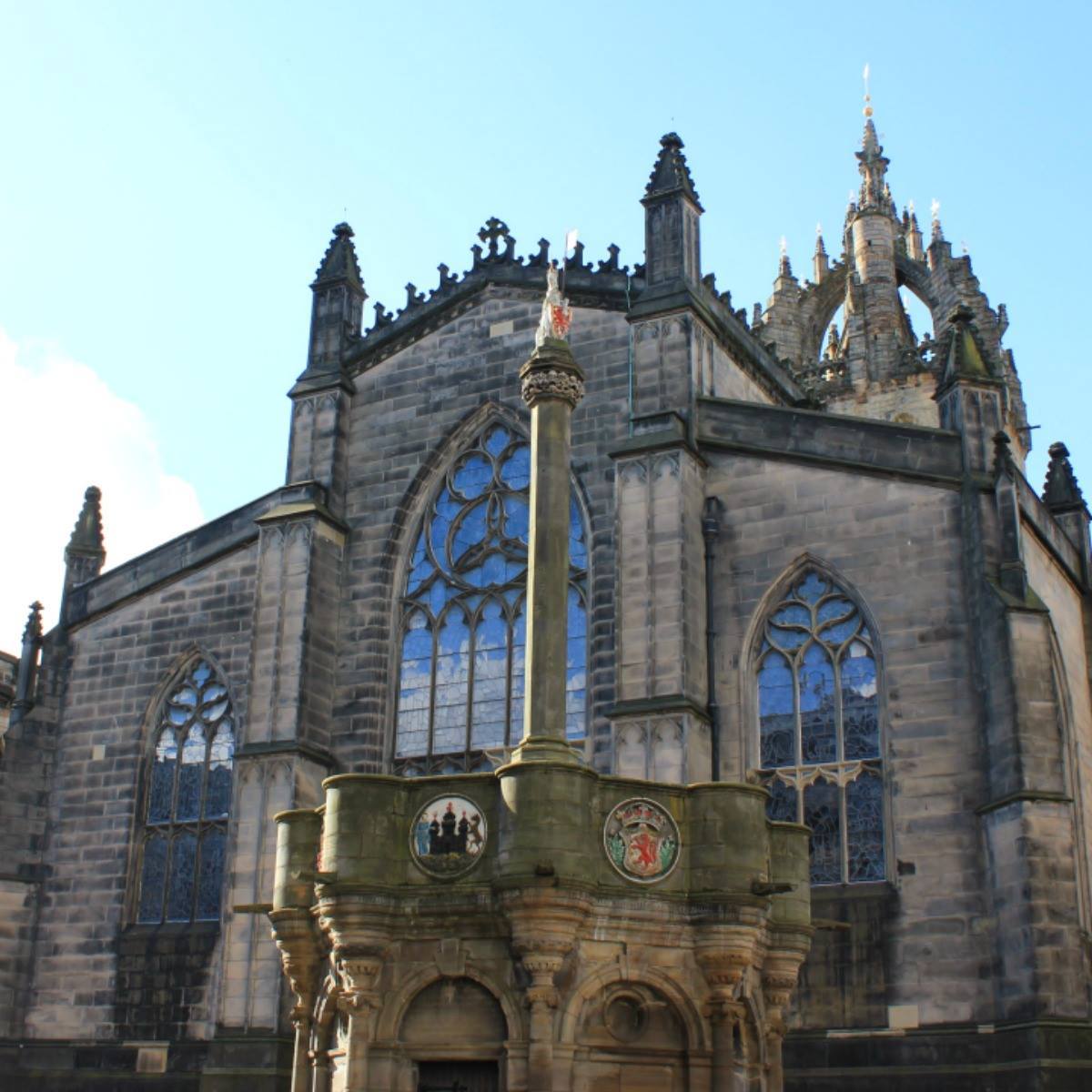The History of St. Giles' Cathedral
24th Nov 2022
By Mark, Mercat Storyteller
Explore the secrets of the city’s past on an Edinburgh history tour and hear the stories of rebels, royals and everyday people.
Often referred to as “St. Giles' Cathedral”, the High Kirk is the centrepiece of Edinburgh’s historic Royal Mile. Its distinctive crown spire pierces the skyline of the Old Town, and its gothic grandeur wows visitors both inside and out. It has also played a central role in Edinburgh’s and Scotland’s history.
How Old is St. Giles' Cathedral?
There has been a church of some description on the site since the 9th century, though the oldest parts of the existing structure are a couple of pillars from the 12th Century. The crown spire dates from the 15th Century, and is modelled on the Crown of Scotland, which can be seen on display in the vault of Edinburgh Castle. Meanwhile, much of the gothic exterior is Victorian window dressing. So the simple question “how old is St Giles?” does not have a simple answer – it’s a complicated building.
Technically, a cathedral is the seat of a bishop. Today St. Giles' is part of the Church of Scotland, which has no bishops. It is a historic cathedral, but not a current one. Hence the two different names: “The High Kirk of Edinburgh”, and “St. Giles' Cathedral”. The church is quite happy to style itself as a cathedral, as evidenced by the signs outside. For the purpose of this blog, I will simply refer to it as “St. Giles'”.
Saint Giles himself was a hermit in the 6th Century, living in modern-day France. He was a great animal lover, and believed the souls of animals were equal to humans. According to legend, one day he came across a hunting party led by King Wamba of the Visigoths. Wamba shot an arrow at a deer, but Giles leapt up and plucked the arrow out of the air. Wamba was so impressed that he converted to Christianity. Giles is the patron saint of beggars, lepers – and Edinburgh.
St. Giles' & The Scottish Reformation
Up until 1560, Scotland was a Catholic country, and St. Giles' was a Catholic church. But the Scottish Reformation – the movement which converted Scotland to Presbyterianism - caused a seismic change, not just for the church but also for politics and the whole of society. One of the prominent figures in this movement was John Knox, who became the minister of St. Giles'. He used his pulpit as a platform to attack Scotland’s Catholic monarch, Mary Queen of Scots.
In 1603, Elizabeth I of England died childless, and James VI of Scotland became James I of England. As a result, he also became head of the Church of England – but not the Church of Scotland, which was independent of the crown.
James’ son, Charles I, attempted to change this. In an attempt to bring the Church of Scotland into line with Anglican traditions, he appointed bishops and introduced a common prayer book. On 23rd July 1637, when the newly-appointed Bishop of Edinburgh was reading from the common prayer book, a lady called Jenny Geddes is said to have thrown her stool at the bishop (a wooden stool, to avoid confusion). This sparked a full-scale riot.
As a result of this unrest, in 1638 the National Covenant was drafted at nearby Greyfriars Kirk. This was effectively a hard-nosed letter to Charles I, telling him to defend and respect the church instead of interfering with it. Copies were distributed to every church in
Scotland, and close to two-thirds of the Scottish population ultimately signed it. Its supporters became known as Covenanters.
The War of The Three Kingdoms
Instead of agreeing to the terms of the Covenant, Charles decided to fight. He asked the English Parliament for money to raise an army, but parliament refused. Charles then declared war on parliament. What followed has often been called the “English Civil War”, but is more correctly known as the “War of the Three Kingdoms”, because there was fighting in Scotland and Ireland too – indeed, it started in Scotland. The Parliamentary forces, led by Oliver Cromwell and aided initially by the Covenanters, prevailed. Charles I was tried for treason, and beheaded.
One incident at St. Giles' had caused a bloody civil war, cost a king his head and changed the course of history.
In recent days, St. Giles' has been at the centre of historical events once again. The coffin of Queen Elizabeth was carried there in a procession from the Palace of Holyroodhouse. Mourners queued all the way to the Meadows to file past the coffin and pay their final respects.
The eyes of the world were on Edinburgh, and its beautiful High Kirk – a building of continuing religious, historical and architectural significance, admired by locals and visitors alike.
Uncover Edinburgh’s past on a history walking tour. Explore the city and discover its hidden gems.

